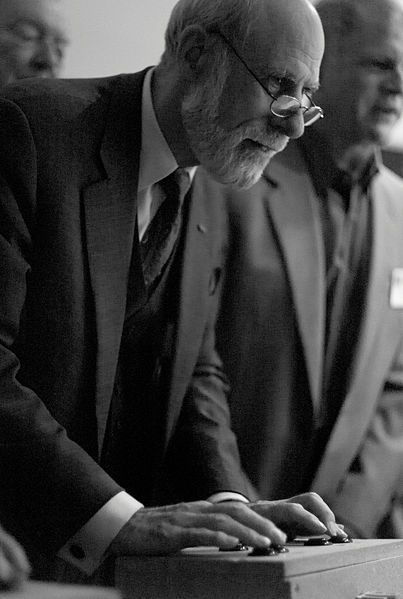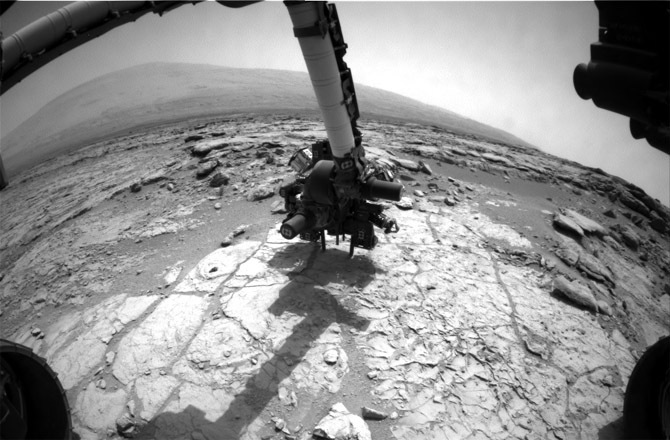Mars is clearly the next great target for our species. We’re seeing signs of this target all around us, from the project called Inspiration Mars, which intends to launch a manned Mars flyby in 2018, to the Dutch effort called Mars One, and the call for colonists to the Red Planet that has already attracted close to 100,000 volunteers. But Mars is also our present, with the rover Curiosity actively drilling into Martian rocks. Its preliminary results show that the so-called Yellowknife Bay depression it has been operating in was once an environment that could have supported life.
But as we contemplate going from remote-controlled Mars rovers to an actual human presence on the planet, we need to vastly improve our communications. Right now there is a lot of technology on or around Mars, including four orbiters and four lander missions since 1996, with two active rovers conducting operations on the surface. We talk to them through the Deep Space Network, which consists of three large antenna installations around the world, spaced so continuous communications with different craft can be achieved as the Earth rotates.
Located in California, Spain and Australia, the Deep Space Network works by point-to-point methods, meaning that we have to point an antenna at a single spacecraft to track and communicate with it. That method worked well when the number of interplanetary missions was small, but now we have not just the growing fleet around Mars but missions to other worlds as well, such as the Cassini Saturn orbiter. NASA lists 86 active missions ranging from the Kepler exoplanet observatory to the International Gamma Ray Astrophysics Laboratory (INTEGRAL) and the Planck mission to study the Cosmic Microwave Background.
What to do? A clue can be found in the fact that the Mars rover Curiosity can send messages directly back to Earth, but it can also uplink information to orbiters like the Mars Reconnaissance Orbiter, which can relay data to and from the Earth. All the way back in 1998, it occurred to a team working with NASA’s Jet Propulsion Laboratory that if we could network our spacecraft together, we would be able to extract more information and, because we could move data at will from one spacecraft to another, we could take an immense burden off the Deep Space Network. No more point-to-point — this would be bringing the Space Age into the Internet Age.
 |
| Vinton Cerf, creator of the TCP/IP protocols that drive the Internet, playing the computer game Spacewar on a PDP-1 computer at the Computer History Museum in 2007. Credit: Wikimedia Common. |
You would think our spacecraft would already be Internet-capable, but the problem is more subtle than it appears. The man leading the interplanetary Internet team is Vinton Cerf, who along with Robert Kahn designed the original TCP/IP protocols that allow the Internet to function. Cerf knew all too well that the methods used to pack and send information on Earth were ill adapted to space. For one thing, even within the confines of our solar system, space is a big place. At the far side of its orbit, Mars is 40 minutes away in terms of round-trip communications. Adding to the problem is the fact that Mars is rotating, so at various times a lander would be out of direct communications, making relays via orbiting stations a necessary part of the mix.
Although we use it every day, we don’t usually dig into how the Internet works. TCP/IP stands for Transmission Control Protocol/Internet Protocol, and it describes a method by which data are broken into small data envelopes and labeled for routing through the network. When they reach their destination, the packets are reassembled. We know how the net that grew out of these protocols transformed communications, but for TCP/IP to work well, it relies on the fast turnover of data. The key tools are ‘chatty,’ exchanging data over and over again to function. File Transfer Protocol, or FTP, takes eight round trips of data connection before the requested file is sent.
Imagine trying to look up a web address at interplanetary distances. On Earth, you type an address into your computer and the IP address is returned — your computer needs that address to open up the connection. From Mars, forty minutes of round-trip time (and add in any disruption caused by the rotation of Mars) causes your web browser to have a long wait before getting an answer. Web browsing becomes tortuous if it is possible at all, and the problem gets worse as spacecraft move further into the solar system. Many Internet operations proceed on Earth with the expectation of quick data return that cannot be met when one computer is on another planet.
 |
| Artist concept of the interplanetary Internet. Credit: NASA/JPL. |
To solve the problem, a new bundle protocol set has emerged from the ongoing work of Cerf’s team. This approach involves the use of store-and-forward methods that are adapted to store data for long periods without losing precious packets — existing Internet protocols cause data packets to be lost unless they can be moved to destination immediately. The new protocols also include robust security to ensure that the interplanetary network isn’t abused by hackers.
Prototype versions of the software are now running on two Mars orbiters, relaying communications from the Curiosity rover and its older cousin Opportunity. The Phoenix lander that landed near the Martian north pole in 2008 used the protocols until weather shut it down. Other elements of the interplanetary network include the Deep Space Network itself and experiments conducted aboard the International Space Station. Also involved: The EPOXI spacecraft, which has rendezvoused with two comets and continues its own observations.
Much remains to be done, but Cerf’s vision extends to a network in which spacecraft that have completed their primary mission can then become additional nodes in a truly interplanetary ‘backbone’ of communications, one that may one day handle video and voice as well as data. With spacecraft storing and forwarding packets between themselves, communications to Earth become far more efficient and can be standardized between the various spacefaring nations.
Ultimately, a Mars colony will have a functioning infrastructure with communications passing through robotic and manned spacecraft as part of a network that will grow ever deeper into the solar system. Rovers and other surface-based equipment will forward data to orbiters for transmission to other spacecraft on the network and eventual transmission back to Earth. It won’t operate like our early Internet, but the interplanetary Internet will bring the benefits of networking to future astronauts as they take on the challenge of building a colony on Mars.









